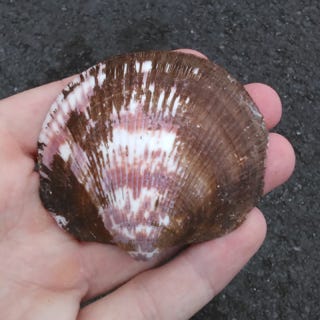
NAVARRE — James Schiros, a resident of Santa Rosa County for the last 12 years and avid beachgoer, discovered something under the Navarre pier that alarmed him: dark, discolored shells some children had found.
Schiros suspected they were stained with oil.
He first photographed the shells the last weekend in June. He brought the picture to the Santa Rosa Press Gazette, but it wasn’t enough for the Florida Fish and Wildlife Conservation Commission to draw any definitive conclusions.
July 13, Schiros came with a box of shells he collected himself and, soon thereafter, the FWC’s Fish and Wildlife Research Institute received it.
Catalina Brown, the FWC’s Fish Kill Hotline Coordinator, emailed the results of the staff’s research. She said the discoloration was not due to oil.
“The shell samples that you sent were analyzed, and we confirmed that none of the specimens fluoresced under black light like oil does,” she said.
Brown said detecting oil by ultraviolet light “is one of the detection methods that was used to monitor the beaches after the Deepwater Horizon oil spill, and we have used it as a tool to confirm or disprove the presence of oil on aquatic animals.”
Further, her message said, “FWC Molluscan staff looked at the pictures and they confirmed that, historically, these unusual black shells have been seen in the northwest corridor. They suspect that the shells are in the initial phases of fossilization and the discoloration is normal periostracum.”
A University of Florida Institute of Food and Agricultural Sciences document, written by Maia McGuire and John Stevely, describes periostracum as a thin, organic layer covering shells.
In the sample Schiros sent, Brown said there was “what appears to be a fossilized burrow of some kind, and the last two chunks right in the middle appear to be a fossilized mass of dirt and rock along with barnacles.”



This article originally appeared on Santa Rosa Press Gazette: Scientists say shells' discolorations aren't oil stains
